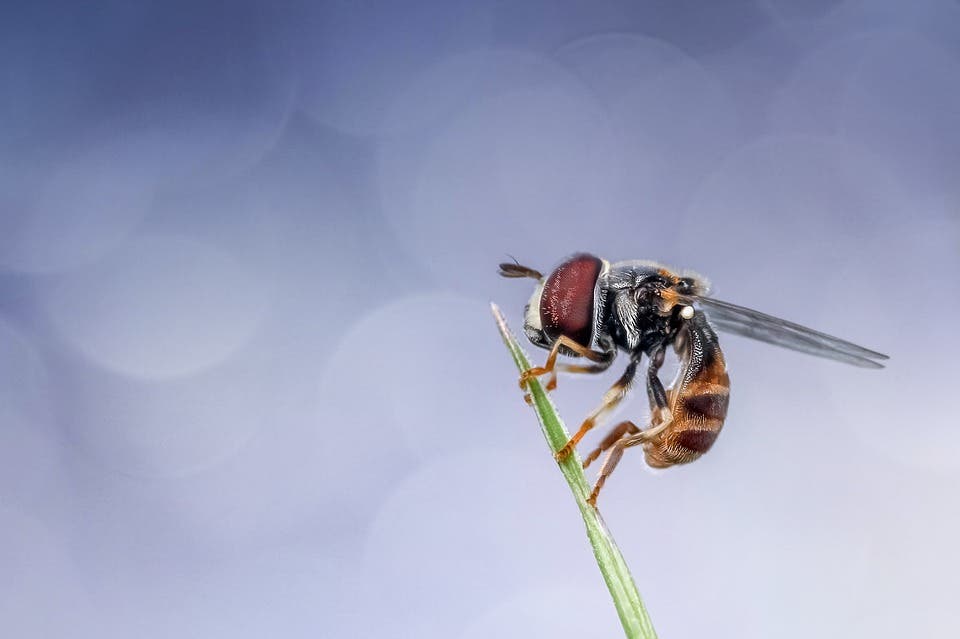Great Britain is in great trouble, new research reports — it’s running out of pollinators.

The Centre for Ecology & Hydrology measured the presence of 353 wild bee and hoverfly species across the UK from 1980 up to 2013. According to a new study, one-third of the investigated species saw a decline in the number of areas in which they were found over this time frame, while one-tenth saw an increase. The remainder of species either had stable population trends or only saw inconclusive changes.
Bee gone
“We used cutting-edge statistical methods to analyse a vast number of species observations, revealing widespread differences in distribution change across pollinating insects,” says Dr. Gary Powney of the Centre for Ecology & Hydrology, who led the research. “There is no one single cause for these differences, but habitat loss is a likely key driver of the declines.
The study analyzed over 700,000 records, most collected by members of the Bees, Wasps and Ants Recording Society (BWARS) and the UK Hoverfly Recording Scheme, who looked at more than 19,000 1km by 1km squares across Great Britain. The team writes that it’s possibly the first study of its kind — a large-scale, long-term, species-specific estimates of distribution change for pollinating insects in Britain.
One positive finding of the study was that key bee species — those responsible for pollinating flowering crops — have actually seen an uptick in numbers. They say this could be an effect of the large increases of mass-flowering crops grown during the study period and government-subsidized schemes that encourage farmers to plant more of the wildflowers the bees feed on.
But now, the bad news: the study also found that, on average, the geographic range of bee and hoverfly species has declined by a quarter — this, they write, is equivalent to a net loss of 11 species in every one-square-kilometer area. This included non-crop pollinator species.
Losses were more notable in northern Britain — likely as a result of climate change. Species that prefer cooler temperatures likely reduced their geographical spread in response to rising mean temperatures, the team writes.
“While the increase in key crop pollinators is good news, they are still a relatively small group of species [among all pollinators],” says Powney. “Therefore, with species having declined overall, it would be risky to rely on this group to support the long-term food security for our country. If anything happens to them in the future there will be fewer other species to ‘step up’ and fulfil the essential role of crop pollination.”
Non-crop pollinators are just as vital to us and the environment at large as crop-pollinator species. They help preserve biodiversity levels in the wild by pollinating wildflowers and acting as a key food resource for other wildlife. “Wildflowers and pollinators rely on each other for survival,” Powney adds, explaining that “loses in either are a major cause for concern when we consider the health and beauty of our natural environment.”
Dr. Claire Carvell of the Centre for Ecology & Hydrology, a co-author of the study, says the results point to multiple pressures affecting species of bees and hoverflies across the country. She says we need more and more reliable data on the pattern of pollinator decline, as well as its causes.
“While this analysis sends us a warning, the findings support previous studies suggesting that conservation actions, such as wildlife-friendly farming and gardening, can have a lasting, positive impact on wild pollinators in rural and urban landscapes. However, these need further refining to benefit a wider range of species.”
“In addition to recording species sightings, more standardised monitoring of pollinator numbers is required at a national level and a new UK Pollinator Monitoring Scheme has been set up to do just this.”
The team says that this study relied entirely on wildlife recorders who go out and take the pulse of different species in their areas. As such, they want to encourage more people to take part in wildlife recording to help us better understand how wildlife is reacting to environmental changes.
The paper “Widespread losses of pollinating insects in Britain” has been published in the journal Nature Communications.






